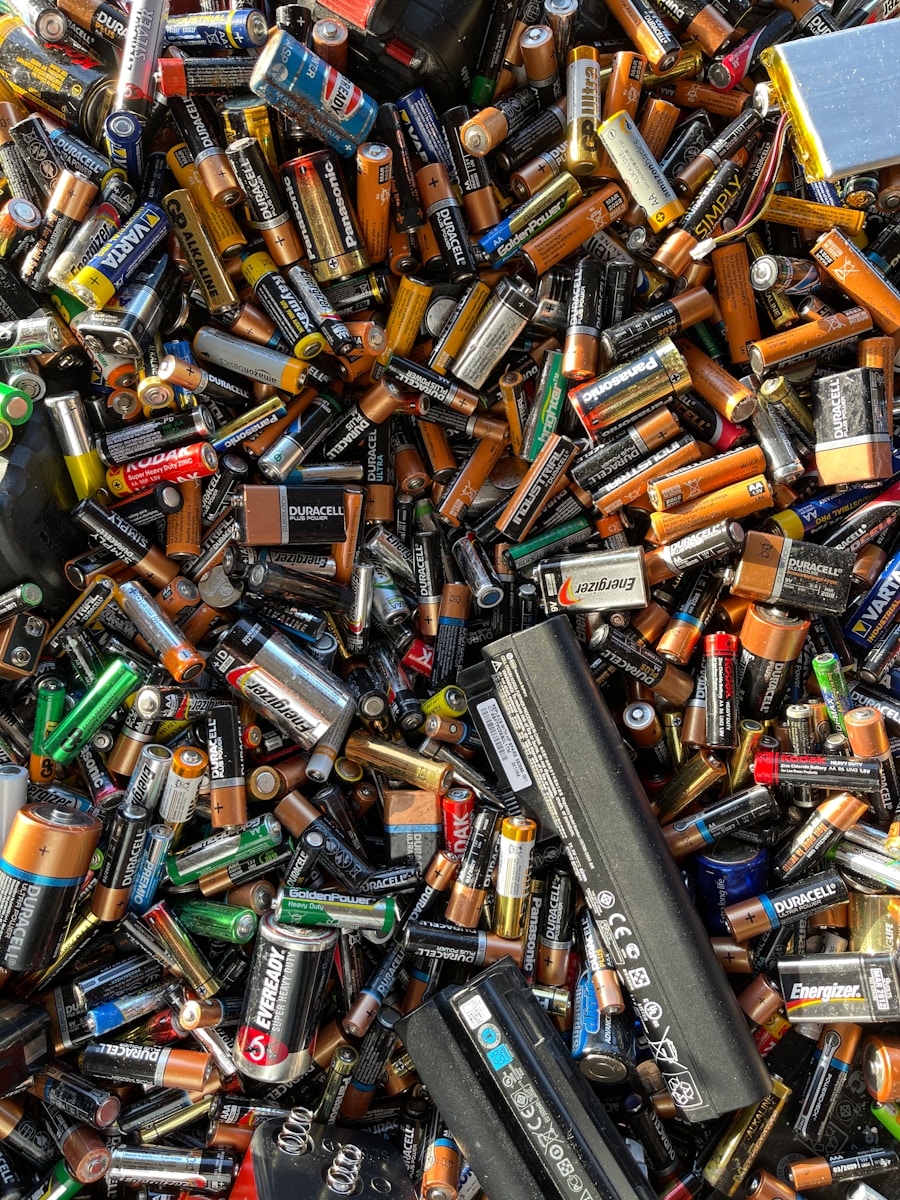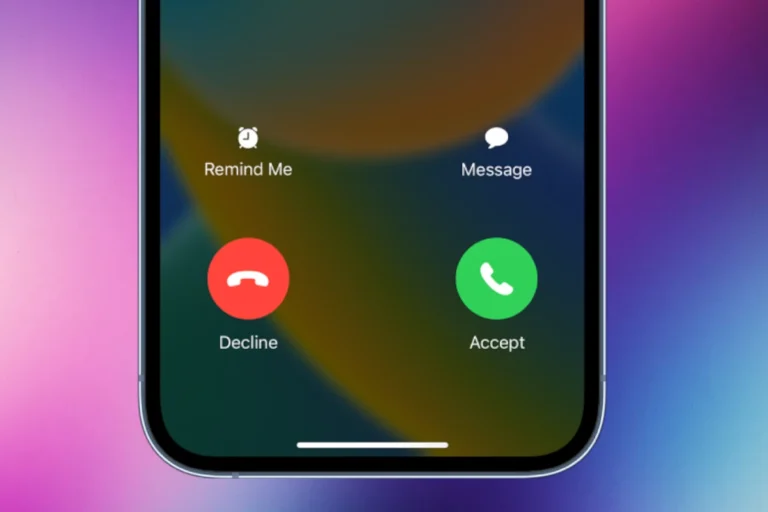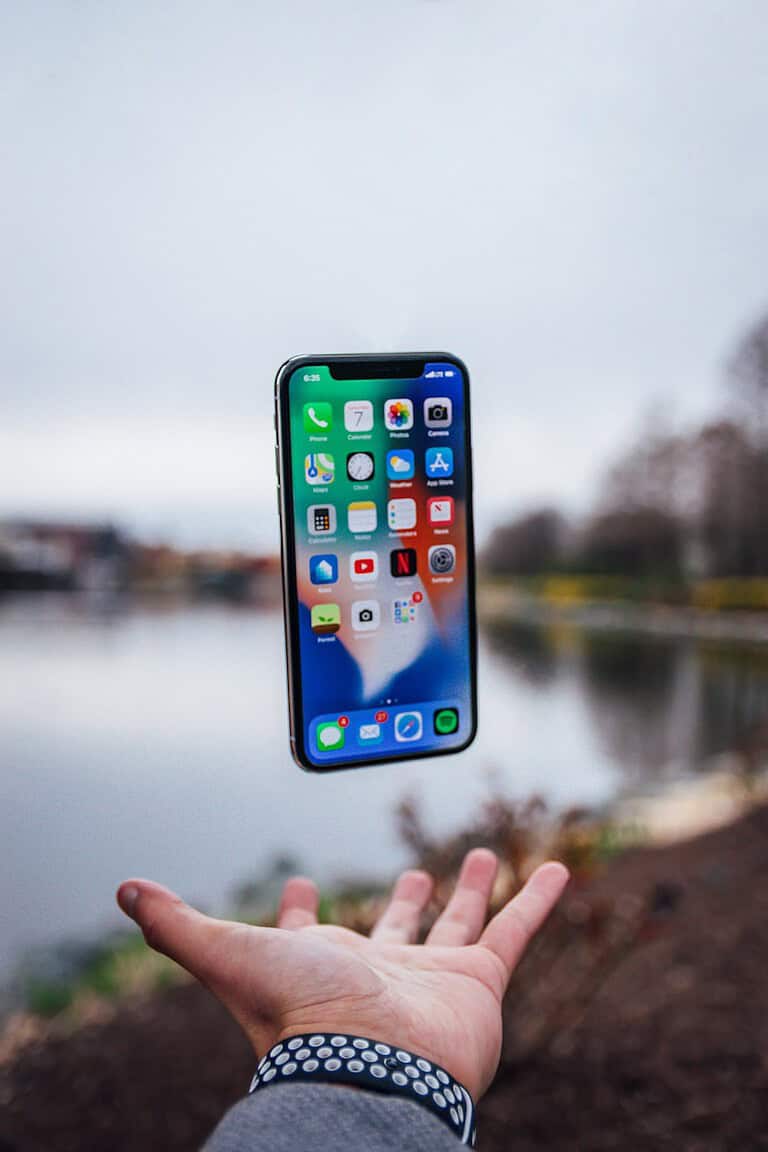
Got a drawer full of old phones or a closet packed with outdated laptops? You’re not alone. Many of us hold onto old electronics, unsure of what to do with them. Properly disposing of your electronic devices not only frees up space in your home but also helps protect the environment from harmful materials found in e-waste.
Before tossing that old tech in the trash (please don’t!), know that you have several responsible options. Passing devices to family members or friends who can use them is the best way to squeeze maximum value out of your electronics. When that’s not possible, retailers like Best Buy offer recycling programs where you can drop off up to three items per household each day.
Not sure where to start? Your local county likely has dedicated e-waste facilities that accept electronics for recycling. Just be sure to call ahead about their hours and any potential fees. And don’t forget to wipe your personal data from devices before handing them over!
Why Recycling Old Tech Matters
Electronic waste (or e-waste) is one of the fastest-growing waste streams in the world. Old devices contain valuable materials (like gold, copper, and aluminum) and hazardous substances (like lead and mercury). Proper recycling:
- Reduces environmental pollution
- Conserves natural resources
- Protects your personal data
- Helps create new products from old materials
(Sources: RecycleOldTech, The Recycle Guide)
🧹 Step 1: Prepare Your Devices for Recycling
1. Back Up Your Data
Before recycling, back up your important files, photos, and contacts.
- iPhone: Use iCloud or iTunes/Finder.
- Android: Use Google Drive or a local backup.
- Computers: Use external drives or cloud storage.
2. Perform a Factory Reset
Erase all data to protect your privacy.
- Phones/Tablets: Settings → Reset → Erase All Content and Settings.
- Laptops/PCs: Reinstall the OS or use the “Reset this PC” option on Windows.
(Tip: Remove SIM and SD cards before recycling.)
3. Wipe Drives Securely
For old computers, use tools like DBAN or BitRaser to securely erase hard drives.
🏷️ Step 2: Determine What Can Be Reused or Donated
Before recycling, check if your device can still serve someone else.
- Donate working devices to schools, shelters, or nonprofits (e.g., Goodwill, World Computer Exchange).
- Resell through platforms like eBay, Back Market, or Apple Trade-In.
- Repurpose old tablets as smart displays or security monitors.
(Source: Yahoo Tech – Don’t Trash That Tech)
🏭 Step 3: Find a Certified Recycling Center
Look for R2 (Responsible Recycling) or e-Stewards certified recyclers — these meet strict environmental and data security standards.
🔍 How to Find One:
- Search: EPA’s eCycling Locator
- Retail Drop-Offs:
- Best Buy – accepts most electronics (phones, TVs, computers).
- Staples – free recycling for small electronics and accessories.
- Apple – offers trade-in credit or free recycling.
- Local Programs: Check your city or county’s waste management site for e-waste collection events.
(Source: RecycleOldTech)
⚙️ Step 4: Recycle Accessories and Batteries Separately
- Cables & Chargers: Many stores (like Staples) have bins for cords and cables.
- Batteries: Never toss in the trash — take them to Home Depot, Lowe’s, or Call2Recycle drop-off points.
- Ink Cartridges: Office supply stores often recycle them for free.
🌱 Step 5: Choose Eco-Friendly Upgrades Next Time
When replacing old tech:
- Buy ENERGY STAR® certified or refurbished devices.
- Choose brands with take-back programs (Apple, Dell, HP, Samsung).
- Use modular or repairable devices (like Fairphone or Framework laptops).
(Source: Bios Central – Eco-Friendly Tips for Recycling Old Electronics)
🧩 Quick Summary
| Step | Action | Why It Matters |
|---|---|---|
| 1 | Back up & erase data | Protects privacy |
| 2 | Donate or resell | Reduces waste |
| 3 | Use certified recyclers | Ensures safe disposal |
| 4 | Recycle accessories | Prevents hazardous waste |
| 5 | Buy sustainably | Reduces future e-waste |
✅ Final Takeaway
Recycling your old tech responsibly is one of the simplest ways to reduce your environmental footprint. Whether you donate, trade in, or recycle, make sure your devices are wiped clean and handled by a certified recycler.
Tip: Always check your local recycling guidelines — some regions offer free e-waste pickup or special drop-off days.
Key Takeaways
- Responsibly recycling electronics protects the environment from toxic materials while creating space in your home.
- Many retailers and manufacturers offer free take-back programs for your unwanted devices.
- Always erase personal data from your devices before recycling, donating, or selling them.
Understanding E-Waste
Electronic waste represents one of the fastest-growing waste streams globally, posing unique challenges for disposal and significant environmental consequences when mishandled.
What Constitutes Electronic Waste
E-waste includes any discarded electrical or electronic devices that have reached the end of their useful life. This encompasses smartphones, laptops, tablets, TVs, printers, and even household appliances like refrigerators and microwaves.
According to recycling experts, nearly 100% of your old technology is recyclable. E-waste contains valuable materials like:
- Precious metals: Gold, silver, platinum
- Base metals: Copper, aluminum
- Rare earth elements: Used in screens and batteries
- Plastics: Various types in casings and components
The average American household has approximately 24 electronic products, many of which eventually become obsolete or break down. Before recycling, you should delete all personal information and remove batteries, which often require separate recycling processes.
The Environmental Impact of E-Waste
When improperly disposed of, e-waste can cause severe environmental damage. Electronic devices contain toxic substances like lead, mercury, and flame retardants that can leach into soil and groundwater when they end up in landfills.
These toxins can contaminate water supplies and harm wildlife and ecosystems. Additionally, valuable resources are wasted when electronics are not recycled properly.
Mining for new materials to replace those lost in landfills creates additional environmental damage through habitat destruction and pollution. The energy saved by recycling one million laptops could power over 3,500 homes for a year.
Climate impact is also significant – proper e-waste recycling reduces greenhouse gas emissions by preventing the need for virgin material extraction and processing.
Preparing Your Tech for Recycling
Before recycling your electronics, proper preparation is essential to protect your personal information and ensure devices are recycled correctly. Taking a few important steps now will safeguard your data and make the recycling process more efficient.
Data Backup and Security
Start by saving all your important information from your devices. You don’t want to lose precious photos, documents, or contacts when recycling your old tech.
For phones and tablets, use cloud services like Google Drive, iCloud, or Dropbox to back up your data. These services make the process simple and secure.
For computers, consider using an external hard drive or cloud storage. Important files might include:
- Documents and spreadsheets
- Photos and videos
- Browser bookmarks
- Email archives
- Software license keys
Don’t forget to save login information for your accounts. A password manager can help organize this information securely for future reference.
Performing Factory Resets
A factory reset is crucial for protecting your privacy when recycling old phones and other devices. This process removes all personal data and returns the device to its original state.
For smartphones, go to Settings and look for options like “Reset” or “Erase All Content.” On iPhones, this is under General > Reset > Erase All Content and Settings. Android devices typically have this option under Settings > System > Reset.
For computers, Windows users should use the “Reset this PC” option in Settings. Mac users can reinstall macOS using Recovery Mode.
For tablets, the process is similar to smartphones. Access the Settings menu and find the reset option.
Always ensure the factory reset is complete before recycling your device. Some devices may require you to confirm multiple times or enter a password.
Removing Batteries and Accessories
Many recycling facilities require batteries to be removed before accepting electronic devices. This is especially important for safety reasons.
Removable batteries should be taken out of laptops, cameras, and some older phones. These batteries often need to be recycled separately at designated collection points.
Built-in batteries in newer devices like smartphones typically don’t need to be removed. The recycling center will handle these properly.
Don’t forget to remove:
- Memory cards and SIM cards
- External storage devices
- Protective cases and covers
- Charging cables and adapters
Some accessories like chargers and cables can be reused with newer devices if they’re compatible. Consider keeping useful accessories or donating them separately if they’re in good condition.
Options for Electronics Recycling
When it’s time to dispose of your old electronics, you have several environmentally responsible options. Recycling your devices not only conserves natural resources but also prevents harmful materials from entering landfills.
Using Manufacturer Take-Back Programs
Many electronics manufacturers offer take-back programs that make recycling your old devices simple. Apple’s Trade In program allows you to exchange your old Apple products for credit toward new purchases or for proper recycling. Similarly, Samsung, Dell, and HP have established programs to take back and recycle their products.
Amazon’s Recycling Program provides prepaid shipping labels for small electronics. This makes it convenient to mail in items like cell phones, tablets, and e-readers.
Before sending in your device, remember to:
- Back up your data
- Factory reset the device
- Remove memory cards and SIM cards
- Detach any accessories or cords
Check the manufacturer’s website for specific instructions on how to prepare your device for recycling.
Local Electronics Recycling Centers
Your community likely offers several options for electronics recycling. Many counties have dedicated e-waste collection sites or periodic collection events. These facilities accept a wide range of electronic items, from computers and TVs to smaller gadgets.
Best Buy stores accept up to three items per household per day for recycling, regardless of where you bought them. Staples also offers electronics recycling services for items like computers, monitors, and printers.
Look for certified e-Stewards or R2 recyclers in your area. These certifications ensure the facility follows strict environmental standards and data security practices.
You can find local recycling options by:
- Checking your city or county website
- Using the Earth911 recycling locator
- Contacting your local waste management department
Donation and Reselling Opportunities
If your electronics still work, consider giving them a second life through donation or resale. Many nonprofit organizations accept working electronics to support their missions or help people in need.
Schools, community centers, and libraries often welcome technology donations. Goodwill partners with Dell to collect and refurbish computers through the Dell Reconnect program.
For valuable items, reselling options include:
- Online marketplaces: eBay, Facebook Marketplace, Craigslist
- Trade-in programs: Gazelle, BuyBackWorld, NextWorth
- Local repair shops: Some purchase used devices for parts
When donating, be sure to include all accessories, manuals, and power cords if possible. This makes your donation more valuable and useful to the recipient.
Before donating or selling, completely wipe all personal data from your devices to protect your privacy.
Recycling Best Practices
Properly recycling your old tech requires more than just dropping devices in a bin. Following established guidelines protects both your data and the environment while ensuring valuable materials don’t end up in landfills.
Sorting and Cleaning
Before recycling electronics, remove any batteries as they often need to be recycled separately. This is especially important for lithium-ion batteries, which can cause fires if improperly disposed of.
Clean your devices by removing any personal stickers or labels. Most importantly, protect your information by wiping your hard drives using specialized data-wiping software. Simply deleting files isn’t enough.
Sort your e-waste by type: computers, monitors, phones, peripherals, etc. This makes the recycling process more efficient. Remove any non-electronic components like paper manuals or plastic packaging, as these may require different recycling streams.
Quick Prep Checklist:
- Back up important data
- Factory reset devices
- Remove memory cards and SIM cards
- Disconnect from accounts (iCloud, Google, etc.)
- Remove batteries when possible
Responsible Recycling Facilities
Not all collection sites handle e-waste properly. Look for dedicated electronics recycling centers rather than general waste facilities. Many retailers like Best Buy, Staples, and Apple offer take-back programs for old electronics.
Check your local municipality’s website for approved e-waste drop-off locations. Many communities host special collection events several times yearly for electronic waste.
Consider manufacturer take-back programs, especially for larger items. Many computer and TV manufacturers are required by law to accept their products for recycling, often at no cost to you.
Avoid facilities that ship e-waste to developing countries where processing standards may be lower. Responsible facilities will have transparent policies about how they handle the materials they collect.
Recycler Certification Standards
Look for recyclers with recognized certifications such as e-Stewards or R2 (Responsible Recycling). These certifications ensure the facility follows strict environmental and ethical standards when processing electronic waste.
Certified recyclers must maintain documentation of how materials flow through their systems and demonstrate proper handling of hazardous materials found in electronics.
They’re also required to ensure data security, with established protocols for destroying information on recycled devices. This gives you added protection against personal data theft.
Many certified recyclers provide certificates of destruction for sensitive items like hard drives, giving you documentation that your data has been properly destroyed. Ask about this service if you’re recycling items with confidential information.
If you can’t find a certified recycler nearby, check if a non-certified facility follows standards like ISO 14001, which indicates basic environmental management practices.
Dealing with Non-Recyclable Tech
While many electronic devices can be recycled, some tech components pose unique challenges for recycling facilities. Knowing what can’t be recycled and how to handle these items properly helps protect the environment from harmful materials.
Identifying Non-Recyclable Components
Not all parts of your electronic devices can be processed at recycling centers. Cathode ray tubes (CRTs) from old televisions and monitors contain lead and are difficult to recycle safely. These require special handling and can’t go in standard e-waste bins.
Batteries, especially lithium-ion types, often need separate recycling channels. Many recycling centers won’t accept them mixed with other electronics due to fire hazards.
Certain plastics used in electronics may not be recyclable at all. Look for recycling codes on plastic parts – those without codes or with codes #3, #6, and #7 are typically harder to recycle.
Items with hazardous materials like mercury (found in some LCD backlights) need special attention. Check with your local facility about their specific policies on these components.
Proper Disposal of Non-Recyclables
When you can’t recycle tech items, proper disposal becomes crucial. Never throw non-recyclable electronics in regular trash where they’ll end up in a landfill. The chemicals can leach into soil and groundwater.
For truly non-recyclable items, look for hazardous waste collection events in your community. Many cities host these several times per year specifically for electronics and other dangerous materials.
Some manufacturers offer take-back programs for their products even when components aren’t recyclable. Check the company website or contact customer service to learn about these options.
Store old batteries in a non-metal container with tape over the terminals until you can dispose of them properly. This prevents short circuits and potential fires.
Consider donating working but outdated technology to schools or nonprofits that may use them for parts or educational purposes, keeping them out of waste streams entirely.
Legislation and Advocacy
Understanding the legal landscape around electronic waste is crucial for responsible recycling. Laws vary widely across states, and advocacy efforts continue to push for stronger national standards.
Current Legislation on E-Waste
Currently, 25 states plus the District of Columbia have enacted specific e-waste legislation with varying requirements and coverage. These laws typically mandate manufacturers to participate in collection and recycling programs.
Some states have robust programs requiring manufacturers to pay for recycling based on market share. Others merely prohibit disposal of electronics in landfills without providing clear alternatives.
California pioneered e-waste legislation with its Electronic Waste Recycling Act, imposing fees on certain electronic purchases to fund recycling programs. New York and Vermont have since implemented arguably stronger programs requiring free and convenient collection options.
Federal legislation remains limited, though the problem crosses state lines. The EPA provides guidelines but lacks comprehensive regulatory authority over e-waste management.
Advocating for Greener Policies
You can take active steps to support better e-waste policies. Contact your representatives to express support for stronger electronics recycling programs that create jobs and recover valuable materials.
Join or support organizations focused on sustainable technology and circular economy initiatives. These groups lobby for producer responsibility laws requiring manufacturers to design products for easier recycling.
Consider participating in public comment periods when new regulations are proposed in your state or community. Your feedback can shape how electronics are collected and processed.
Business owners can join industry coalitions advocating for standardized approaches to e-waste management across state lines. This reduces compliance complexity while improving environmental outcomes.
Remember that advocacy efforts have successfully pushed many manufacturers to create voluntary take-back programs even in states without mandatory requirements.
Frequently Asked Questions
Many people have concerns about what to do with their old tech. Here are answers to common questions about electronics recycling, from preparation steps to finding drop-off locations.
How can I safely dispose of my old electronics?
The safest way to dispose of old electronics is through proper recycling channels. Never throw electronics in regular trash as they contain harmful materials like lead and mercury.
You should look for certified e-waste recyclers who follow environmental guidelines. These facilities ensure hazardous components are handled properly.
Local government collection events also provide safe disposal options for residents. These events typically happen several times per year in most communities.
What options are available for recycling old tech at home?
Mail-back programs let you recycle from home. Many manufacturers provide prepaid shipping labels for sending back your old devices.
Some retailers offer drop-off boxes where you can deposit small electronics like phones and batteries during your regular shopping trips.
You can also arrange for pickup services in some areas, where recycling companies will come directly to your home for larger items or multiple devices.
Where can I recycle my old electronics for free?
Many states have free recycling programs for certain electronics. For example, Washington’s E-Cycle program accepts televisions, computers, laptops, and tablets at no cost.
Retailers like Best Buy offer free recycling for many electronics regardless of where you purchased them. Check their website for item limitations.
Manufacturer take-back programs often provide free recycling for their own products. Apple, Dell, HP, and Samsung all have programs to recycle their devices.
Are there ways to recycle old tech and earn money?
Trade-in programs at retailers give you store credit for eligible devices. The better condition your device is in, the more credit you’ll receive.
Buyback companies like Gazelle and ecoATM evaluate your electronics and pay you based on their condition and market value.
Selling directly to others through marketplace platforms often yields the highest return. Sites like eBay, Facebook Marketplace, and Craigslist connect you with buyers interested in your used tech.
What should I do before recycling my old computer or device?
Always back up important data before recycling. Transfer photos, documents, and other files to a new device or cloud storage.
Properly wipe all personal information from your devices. For phones and tablets, perform a factory reset. For computers, use specialized data wiping software.
Remove batteries when possible as they often need to be recycled separately. Also remove memory cards, SIM cards, and external storage devices.
How can I find local e-waste recycling centers near me?
Contact your local government to ask about electronics recycling programs. Many cities and counties maintain dedicated facilities or scheduled collection events.
Search online directories like Earth911 or Call2Recycle that help you locate nearby recycling centers based on your zip code and the type of item.
Check with local electronics stores, as many offer recycling services. Best Buy, Staples, and Office Depot typically accept various electronics for recycling at their retail locations.






